Basic troubleshooting - Useful tools - Read this 2nd
Welcome to the basic troubleshooting section. If you're here, then you're here to learn, and that's great.
It may be you're new to the world of retro computing, and have a machine that is not behaving, and perhaps won't boot, but being new to the scene and perhaps without any experience with electronics, you need to understand what tools you will need to help you troubleshoot.
In terms of some of the tools you need, there is an expectation you have some essentials such as screwdrivers, pliers etc. You won't get far without these, and they won't be described here.
The first and most basic tool you need to use is your mind!!
If you have a problem and approach it illogically and without a plan, it will fail. Start by doing the simple obvious things first - check fuses, leads, power etc before even considering diving into electronic troubleshooting.
For example, you have no sound. Is the volume down or mute on? Do the speakers/headphones work elsewhere, do the leads have continuity etc. Do the basics before deciding it's a complex electronic problem.
Once the basics are done, then plan how you will get the data you need to prove the problem, and understand that it make take time to do so.
Your mind is the first tool to pick up, and keep using throughout the process, because if you don't it is unlikely you'll get to the bottom of your problem.
Now, with your mind engaged, here are some basic and slightly more advanced electronic tools. None of the tools here are particularly expensive, and none require a degree in rocket science to operate.
These are all tools I own and use regularly for troubleshooting.
The Multimeter:
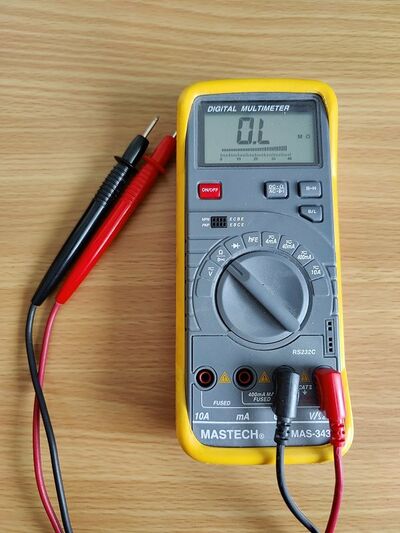
The multimeter is perhaps the most essential of the tools when you start to look at problems, with good reason, because it is very flexible.
With one you can do the following:
- 1. Measure voltages. Do I have the correct voltages in my computer?
- 2. Measure resistance. Does that resistor still give the same value as it did when it was new?
- 3. Measure current. Is the correct amount of power being delivered to the computer?
- 4. Measure continuity. Is there a connection between point A and point B?
The device shown does incorporate some additional features, such as diode and transistor testing, but these features are not essential.
Similar devices to get you started can be had for under £10 that will let you do all 4 of the above tests. As your experience grows, you can spend more, but as a beginner, don't buy the biggest fanciest multimeter you can find, because if you decide the hobby isn't for you, you've spent a lot of money on something you'll never use again.
If you want to begin troubleshooting and don't have at least a multimeter, then go and get one. It's my No1 essential tool.
The Capacitance meter:
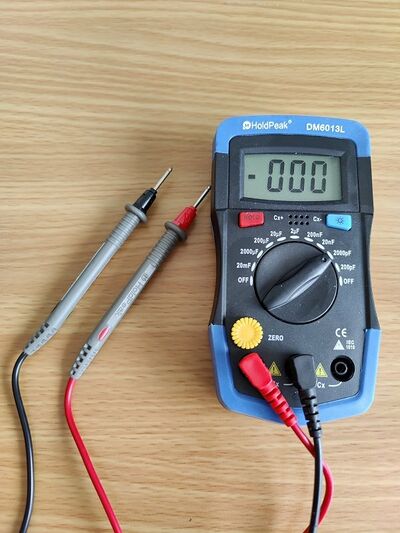
What's this? Another multimeter? Actually no, despite appearances it has a completely different and more singular task. It measures the capacitance of capacitors!
This type is more useful for checking values in situ, whilst the MFT mentioned later is designed for testing individual components. Whilst it's a useful tool, it isn't essential, so be aware of it, but you don't need rush out and buy one right away.
The Logic Probe:
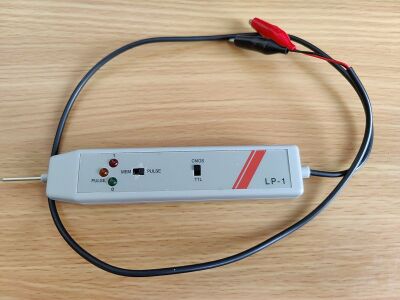
For me the logic probe comes in a close second to the multimeter in usefulness. Computers like the Atari ST use something called TTL logic, which has 2 basic states. High or 1 means there is 5v present, low or 0 means that there is 0v and these values equate to binary 1 & 0. Because of the way computers work, it is possible that a connection to a chip can cycle rapidly between these 2 states, something that is described in Logic Probe parlance as 'Pulse'.
These devices give you a very quick at a glance view of what is happening on 5v and GND pins of chips, and can help you get an overall idea of what data and address lines are doing.
These are also available in basic form for under £10 and for me are an essential addition to your toolkit. Order one when you buy a multimeter :)
The Logic Analyser:
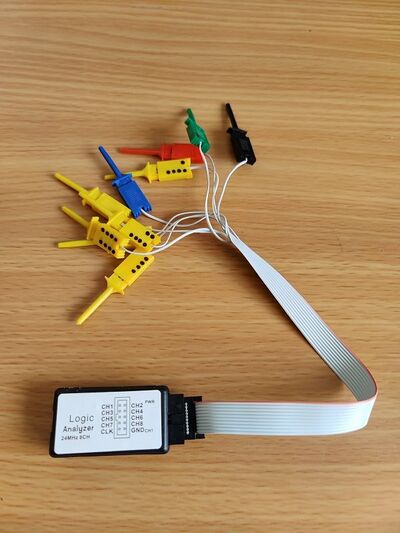
This is the big brother of the logic probe, and now also available for under £10. The Logic Analyser can measure the states of pins on chips, so 1 & 0, but unlike the Logic Probe, it can examine multiple channels at once, and because it plugs into a PC, allows you to record these channels. For example, you could connect the 8 channels of the device shown to 8 address lines, or 8 data lines, and record as they 'Pulse', then play it back.
I'd describe it as an oscilloscope for logic.
Given the cheap price and free software, these are well worth investing in if you need to see more than one channel of logic at a time. I wouldn't regard them as essential for basic troubleshooting however.
The Oscilloscope:

The Oscilloscope is the most expensive of all the devices described here. It can measure voltages with ease, and and also frequency, but what makes it special is its flexibility.
Unlike the Multimeter, it can record data that you can go back and review, have triggers set so that recording starts when a voltage hits a certain level, capturing an event for you on screen, and being a software defined device it allows for many different measurements such as averages, means, peaks to all be applied to whatever you're measuring.
For example if you are measuring the state of the RESET pin of a CPU, where a Multimeter or a Logic Probe would just show the transition between high and low, an Oscilloscope could show you how long it took to go from high to low, and allow you to examine the whole transition in close detail.
I wouldn't recommend you buy one at the beginning of your troubleshooting experience, because the one shown at £150 represents the low cost option, and unless you have a specific requirement it won't help you as it also has a steeper learning curve.
If you are interested in playing with an Oscilloscope and at the same time improving your soldering, there are many kits available on eBay for around £15-£20 that will allow you to build a small Oscilloscope with a 2" screen. Whilst it is very limited in scope (I know,bad joke! :lol: ), it is an interesting experiment and may whet your whistle for something more professional later on.
There are also USB Oscilloscopes available which plug into your PC and use that as your display. Personally, having owned one, I don't like these as the user interface is rather clunky compared the the physical knobs and buttons of the real thing. If your budget is tight, they do fulfil a role as they can be had for around £50, but bear in mind their performance is limited by the performance of the PC you plug into.
The TL866II Pro:

This is probably the second most expensive device in this list at around £50-£60. Again, not an essential device, but as you improve your skills, it becomes a very useful device indeed.
The TL866II Pro is known mostly for the ability to program ROMs and microcontrollers. Programming ROMs is something you can learn to do easily with this tool, and can help you upgrade your machine to later versions of TOS or even allow you to create custom ROMs such as those that might allow you to boot to 2 different versions of TOS based on the position of a selector switch.
What is often not understood,is that the TL866II Pro, and its predecessors/successors also has a test mode which encompasses many of the 74LS logic series of chips used frequently in the likes of the Atari ST. It's as simple as dropping the suspect chip into the TL866II Pro, select the chip from the software menu and then test it.
The Multi-Function Tester:
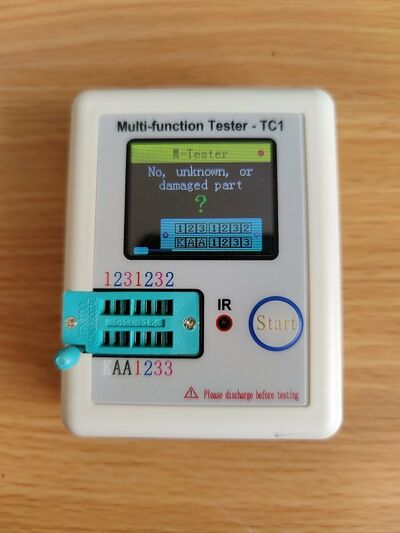
This is an inexpensive device, that offers a multitude of functions. At between £10-£15 is is cheap enough to buy, but only really comes into its own once you have components that you need to test.
This device will:
- 1. Check resistors(including potentiometers) and report back values. Useful for that big bag of resistors that the label fell off!
- 2. Check diodes (including double diodes).
- 3. Check capacitance and report internal resistance (ESR) of any capacitor.
- 3. NPN and PNP bipolar transistors, N-channel and P-channel MOSFETs, JFETs, N- and P-IGBTs.
- 4. Inductors, thyristors & triacs.
Of course this is only useful if you have a component in your hand, but if you have a need to reclaim parts and need to test them before reusing, this is an inexpensive way of doing so.